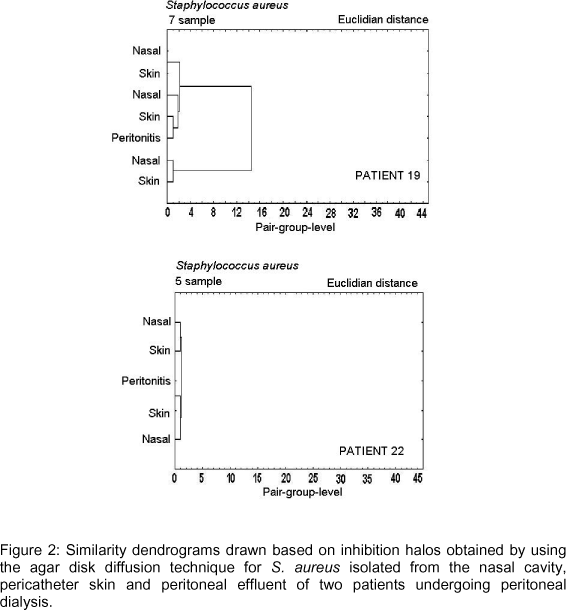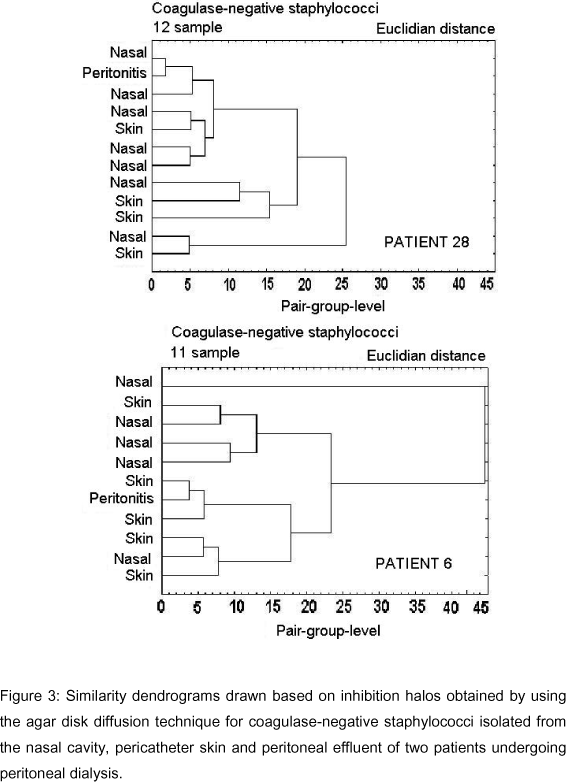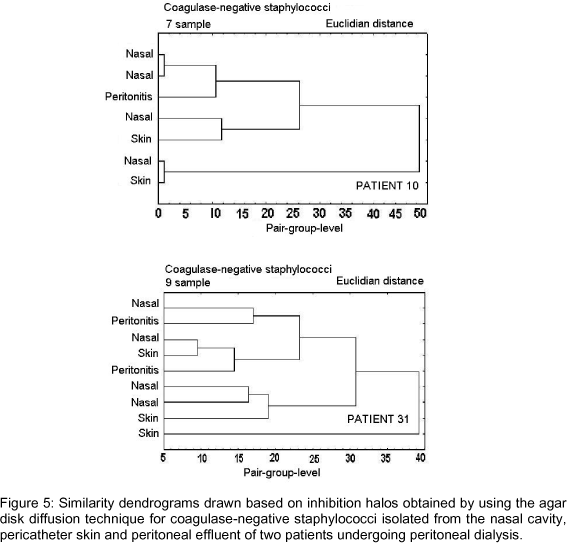The presence of Staphylococcus aureus in the nasal cavities and pericatheter skin of peritoneal dialysis patients put them at high risk of developing peritonitis. However, it is not clear whether the presence of coagulase-negative staphylococci (CNS) in the nasal passages and skin of patients is related to subsequent occurrence of peritoneal infection. The aim of the present study was to verify the relationship between endogenous sources of S. aureus and CNS and occurrence of peritonitis in patients undergoing peritoneal dialysis. Thirty-two patients on peritoneal hemodialysis were observed for 18 months. Staphylococcus species present in their nasal passage, pericatheter skin and peritoneal effluent were identified and compared based on drug susceptibility tests and dendrograms, which were drawn to better visualize the similarity among strains from extraperitoneal sites as well as their involvement in the causes of infection. Out of 288 Staphylococcus strains isolated, 155 (53.8%) were detected in the nasal cavity, 122 (42.4%) on the skin, and 11 (3.8%) in the peritoneal effluent of patients who developed peritonitis during the study. The most frequent Staphylococcus species were CNS (78.1%), compared with S. aureus (21.9%). Among CNS, S. epidermidis was predominant (64.4%), followed by S. warneri (15.1%), S. haemolyticus (10.7%), and other species (9.8%). Seven (64%) out of 11 cases of peritonitis analyzed presented similar strains. The same strain was isolated from different sites in two (66%) out of three S. aureus infection cases. In the six cases of S. epidermidis peritonitis, the species that caused infection was also found in the normal flora. From these, two cases (33%) presented highly similar strains and in three cases (50%), it was difficult to group strains as to similarity. Patients colonized with multidrug-resistant S. epidermidis strains were more predisposed to infection. Results demonstrated that an endogenous source of S. epidermidis could cause peritonitis in peritoneal dialysis patients, similarly to what has been observed with S. aureus.
Staphylococcus aureus; coagulase-negative staphylococci; carriers; peritoneal dialysis; peritonitis









